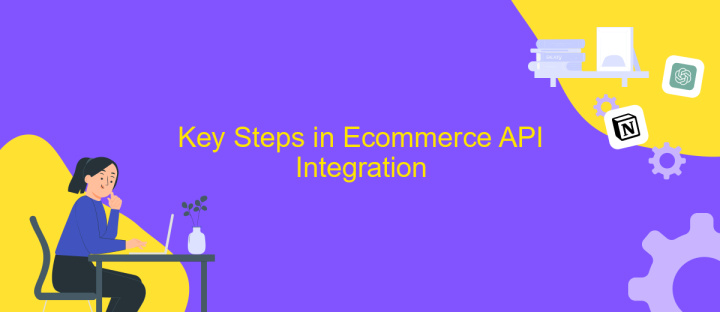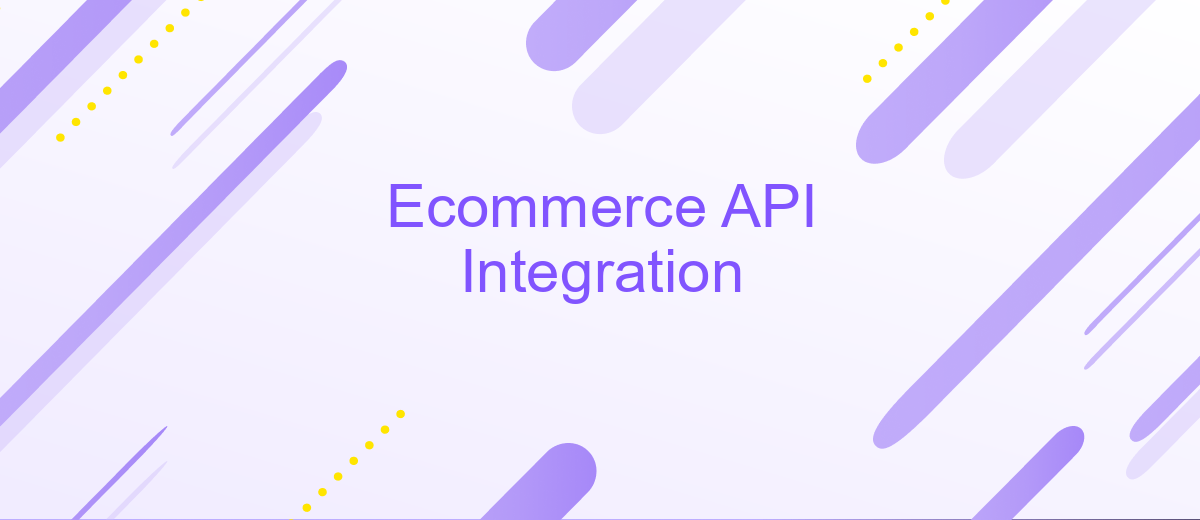Ecommerce API Integration
In today's rapidly evolving digital landscape, Ecommerce API integration has become a crucial component for businesses seeking to streamline operations and enhance customer experiences. By enabling seamless communication between various software applications, APIs empower online retailers to automate processes, manage inventory efficiently, and provide personalized shopping experiences. This article explores the importance of Ecommerce API integration, its benefits, and how businesses can leverage this technology to stay competitive in the ever-changing market.
Understanding Ecommerce APIs and Their Benefits
Ecommerce APIs are essential tools that facilitate seamless communication between different software applications in the ecommerce ecosystem. By allowing systems to exchange data efficiently, these APIs enable businesses to enhance their online platforms, streamline operations, and improve customer experiences. Understanding how these APIs function is crucial for businesses aiming to leverage technology to stay competitive in the digital marketplace.
- Integration: Connect various platforms like payment gateways, shipping services, and inventory management systems.
- Automation: Reduce manual tasks by automating order processing and inventory updates.
- Scalability: Easily scale operations as business grows without overhauling existing systems.
- Customization: Tailor ecommerce solutions to meet specific business needs and customer preferences.
- Real-time Data: Access up-to-date information to make informed business decisions.
By incorporating ecommerce APIs, businesses can create a more flexible and responsive online environment. This integration not only enhances operational efficiency but also provides customers with a more personalized and engaging shopping experience. As ecommerce continues to evolve, leveraging APIs will be vital in maintaining a competitive edge and achieving long-term success.
Choosing the Right Ecommerce API for Your Needs

Choosing the right Ecommerce API is crucial for ensuring seamless integration and enhancing your online business operations. Start by evaluating your specific business needs, such as inventory management, payment processing, or customer relationship management. Look for APIs that offer robust documentation and support, as these will be essential for smooth implementation and troubleshooting. Additionally, consider the scalability of the API to ensure it can grow with your business. Compatibility with your existing systems and platforms is also key, as it minimizes disruptions and ensures a cohesive workflow.
When it comes to setting up integrations, services like ApiX-Drive can be invaluable. ApiX-Drive simplifies the process by allowing you to connect various applications without the need for extensive coding knowledge. This can save time and resources while ensuring that your systems communicate effectively. Moreover, ApiX-Drive offers flexibility, enabling you to customize integrations to suit your unique business requirements. By carefully assessing your options and leveraging the right tools, you can optimize your ecommerce operations and stay competitive in the digital marketplace.
Key Steps in Ecommerce API Integration

Integrating an API into an ecommerce platform is a crucial step in enhancing functionality and improving user experience. This process involves several key steps that ensure seamless integration and optimal performance.
- Identify Requirements: Clearly define the business needs and objectives to determine the necessary API features and functionalities.
- Select the Right API: Evaluate various API options to find the one that best aligns with your requirements and offers comprehensive documentation and support.
- Authentication and Security: Implement robust authentication methods to secure data exchange and protect sensitive information.
- Test the Integration: Conduct thorough testing to ensure the API functions correctly and integrates smoothly with existing systems.
- Monitor and Optimize: Continuously monitor the API's performance and make necessary adjustments to enhance efficiency and resolve any issues.
By following these steps, businesses can successfully integrate APIs into their ecommerce platforms, unlocking new capabilities and improving customer satisfaction. Proper planning and execution are essential to achieving a seamless integration that meets business goals and enhances operational efficiency.
Common Challenges and Troubleshooting

Integrating an eCommerce API can be a complex task, often presenting a range of challenges. Developers frequently encounter issues related to data synchronization, where discrepancies between the eCommerce platform and external systems lead to inconsistent data. This can affect inventory levels, pricing, and order statuses, causing significant operational disruptions.
Additionally, security concerns are paramount. Ensuring secure data transmission and protecting sensitive customer information is critical. Developers must implement robust authentication and encryption methods to safeguard data integrity and privacy. Furthermore, compatibility issues with existing systems can arise, necessitating thorough testing and adaptation.
- Data synchronization errors
- Security vulnerabilities
- Compatibility with legacy systems
- API rate limits and throttling
To address these challenges, developers should adhere to best practices such as comprehensive testing, employing middleware solutions for compatibility, and maintaining clear documentation. Regular monitoring and logging can help identify and resolve issues promptly, ensuring a seamless integration process. By proactively managing these challenges, businesses can leverage API integrations to enhance their eCommerce operations effectively.
Best Practices and Future Trends
When integrating Ecommerce APIs, it is crucial to follow best practices to ensure seamless and efficient operations. Prioritize security by implementing OAuth for authentication and regularly updating API keys. Ensure robust error handling to manage exceptions gracefully, enhancing user experience. Opt for RESTful APIs due to their scalability and flexibility. Additionally, consider using services like ApiX-Drive, which can simplify the integration process by offering pre-built connectors and automation tools, reducing development time and effort.
Looking ahead, the future of Ecommerce API integration is likely to be shaped by advancements in AI and machine learning. These technologies can enhance personalization and predictive analytics, offering more tailored shopping experiences. Furthermore, the rise of headless commerce will demand more dynamic and flexible API solutions, allowing businesses to deliver content across various platforms efficiently. Staying updated with these trends and continuously refining API strategies will be key to maintaining a competitive edge in the evolving ecommerce landscape.
FAQ
What is Ecommerce API Integration?
How does Ecommerce API Integration benefit online businesses?
What are the common challenges faced during Ecommerce API Integration?
How can businesses simplify the process of Ecommerce API Integration?
What should businesses consider when choosing an Ecommerce API Integration solution?
Apix-Drive is a simple and efficient system connector that will help you automate routine tasks and optimize business processes. You can save time and money, direct these resources to more important purposes. Test ApiX-Drive and make sure that this tool will relieve your employees and after 5 minutes of settings your business will start working faster.

